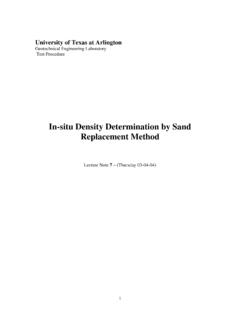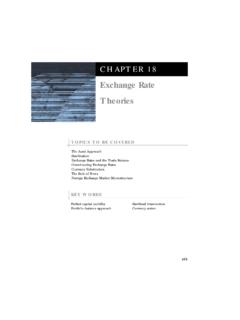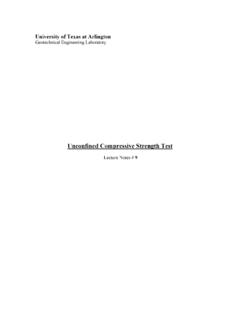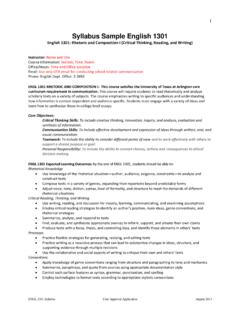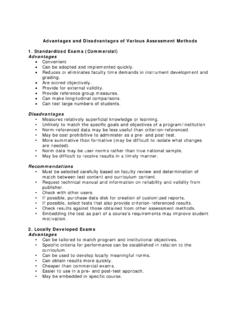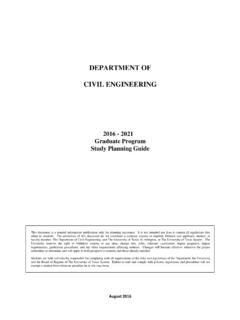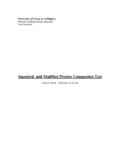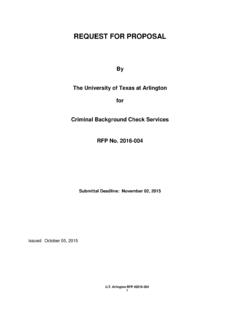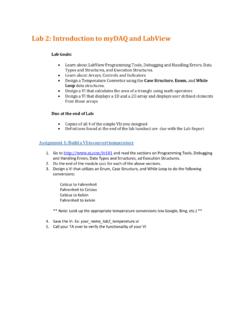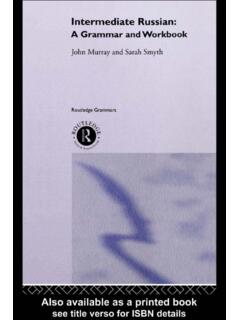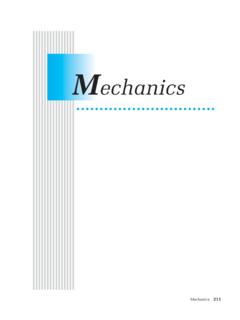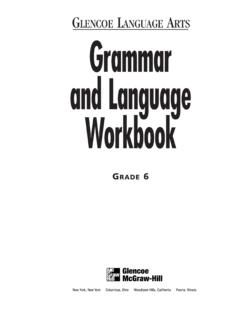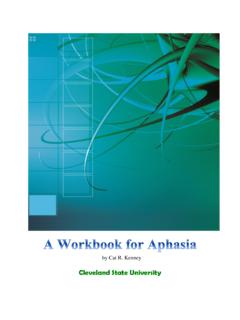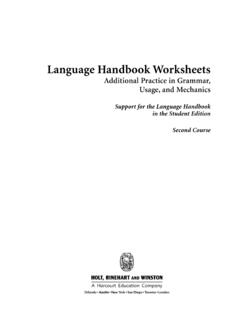Transcription of Thai: An Essential Grammar - UTA
1 ThaiAn Essential GrammarThis is a concise and user-friendly guide to the basic structures of forms are demonstrated through examples, given in bothThai script and romanised transliteration, with clear, jargon-free expla-nations. It is designed for use both by students taking a taught course inThai and for independent learners, and includes guidance on pronuncia-tion, speech conventions and the thai writing system as well as include: Sentence particles Negation Questions Numerals and quantification Location markers and prepositionsWith numerous examples bringing Grammar to life, this unique referencework will prove invaluable to all students looking to master the grammarof Smythis Lecturer in thai at the School of Oriental and AfricanStudies, University of Essential GrammarsThe following titles are available in the Essential Grammarsseries:ChineseDanishDutchEnglish FinnishGeorgian.
2 A Learner s GrammarHungarianModern HebrewNorwegianPolishPortugueseSwedishUr duOther titles of related interest published by Routledge:Colloquial ThaiBy John Moore and Saowalak Rodchue111123456789101111211134567892011 1123456789301111234567894041111 ThaiAn Essential GrammarDavid Smyth11112345678910111121113456789201111 23456789301111234567894041111 London and New York Taylor&FrancisGroup ROUTLEDGEF irst published 2002 by Routledge11 New Fetter Lane, London EC4P 4 EESimultaneously published in the USA and Canadaby Routledge29 West 35th Street, New York, NY 10001 Routledge is an imprint of the Taylor & Francis Group 2002 David SmythAll rights reserved. No part of this book may be reprinted orreproduced or utilised in any form or by any electronic, mechanical,or other means, now known or hereafter invented, includingphotocopying and recording, or in any information storage or retrieval system, without permission in writing from the Library Cataloguing in Publication DataA catalogue record for this book is available from the British of Congress Cataloging-in-Publication DataA catalog record for this book has been requestedISBN 0 415 22614 7 (pbk)ISBN 0 415 22613 9 (hbk)11112345678910111121113456789201111 23456789301111234567894041111 This edition published in the Taylor & Francis e-Library, 2005.
3 To purchase your own copy of this or any of Taylor & Francis or Routledge scollection of thousands of eBooks please go to ISBN 0-203-99504-X Master e-book ISBNFor Manas Chitakasem111123456789101111211134567892 0111123456789301111234567894041111111123 4567891011112111345678920111123456789301 111234567894041111 PrefacexiiiIntroduction1 thai and its speakers1 Romanisation2 Learning Thai2 Dictionaries3 Linguistic literature on Thai3 Chapter 1 and 2 The writing by syllables and dead 3 Nouns, classifiers and noun new phrases and order in noun phrases33 Chapter 4 pronouns: : each other pronouns54 Chapter 5 verb to be and of utterance, mental activity and perception withw of emotion with th To give : direct and indirect serialization81 Chapter 6 Adjectives (stative verbs) and of of adjectives911111234567891011112111345678 920111123456789301111234567894041111 ContentsviiiChapter 7 Adverbs and adverbial of of of of of of degree105 Chapter 8 Location markers and other prepositions.
4 Th iandy To For By With From 115 Chapter 9 Clauses and order and and indirect particles125 Chapter 10 Sentence particles129 Chapter 11 main resultative auxiliary y d y+ VERB (PHRASE) y ch y+ y negatives: intensifying and Negative Negative conditional Saying no Useful negative Two further negatives: m andha a .. m y151 Chapter 12 questions170 Chapter 13 Numbers, measurement and numbers with s kandt , twice .. , decimals, percentages, idiomatic expressions involving Distribution: per Negative Approximation: about Restriction: only More than Less than As many as 1881111234567891011112111345678920111123 456789301111234567894041111 ContentsxChapter 14 of the expressions of the time196 Chapter 15 thai speech 1 Romanisation systems215 Appendix 2 The verbs h y, d y/d ay and pen.
5 A summary218 Glossary223 Bibliography and further reading227 Index23111112345678910111121113456789201 11123456789301111234567894041111 Contentsxi111123456789101111211134567892 0111123456789301111234567894041111 This volume aims to fill a long-felt need, among both teachers and studentsof thai , for a detailed descriptive Grammar which is accessible to theordinary learner with little or no knowledge of linguistic beginners, it should prove a useful reference source that may be usedin conjunction with any introductory language course; for more advancedlearners, it will hopefully clarify grey areas in their knowledge and providesome further insight into the book could not have been attempted, let alone completed, withoutthe help and encouragement of many people, over a period of many am indebted to all those Thais who, over the years, with charm, graceand tact have helped me to improve my knowledge of their language ; to all those authors listed in the bibliography (and many others, toonumerous to mention); to the late Peter J.
6 Bee, formerly Lecturer in Taiat the School of Oriental and African Studies, University of London, whodid much to arouse my curiosity about language in general and thai in particular; and to those students of thai who each year ask new and searching questions and fill me with fresh resolve not to have to bluff my way through the following year. I am especially grateful toSujinda Khantayalongkoch, Manas Chitakasem, Vantana Cornwell andRoutledge s anonymous reviewer from Australia, for their careful checkingof the draft manuscript and their numerous constructive suggestions forimproving the text; their input has been invaluable. I am also grateful toWalaiporn Tantikanangkul, Andrew Simpson and Justin Watkins for somevery practical guidance.
7 Errors, omissions and other shortcomings thatmay remain are, however, entirely my own responsibility. Finally, mygreatest debt of gratitude is to Manas Chitakasem, my teacher, colleagueand friend for nearly thirty years, for his unstinting support and encour-agement since my first faltering forays into thai ; it is to him that thisbook is dedicated with respect and and its speakersThai (formerly called Siamese ) is a member of the Taifamily of languageswhich are spoken by an estimated 70 million people dispersed over awide area of Asia, from northern Vietnam to northern India. thai , withnearly 50 million first- language speakers, is the most important languagein the Tai family, which also includes Lao, Shan (spoken in northernBurma) and some 15 million speakers in southwestern China.
8 Despitecommon structural features, even closely related Tai languages are oftenmutually unintelligible because of phonological and lexical speakers were once thought to have originated from China andmigrated southwards, but today the border area between northern Vietnamand China s Guangxi province is regarded as a more likely origin. Fromthe eighth century ADTai speakers began to migrate westwards and south-westwards into what is present-day is the national language of Thailand. Distinct regional dialects ofThai are spoken in the north, northeast and south of the country, butthe language of the Central Region is regarded as the standard and isused both in schools and for official purposes throughout the is a tonal language , with the meaning of each syllable determinedby the pitch at which it is pronounced.
9 Standard thai has five tones mid, low, high, rising and falling. thai has no noun or verb inflections:a noun has a single form, with no distinction between singular and plural,while past, present and future time can be conveyed by a single verbform. Like many other South-East Asian languages, thai has a complexpronoun system, which reflects gender, age, social status, the formalityof the situation and the degree of intimacy between speakers. Much ofthe original thai lexicon is monosyllabic; a high percentage of polysyl-labic words are foreign borrowings, particularly from the classical Indianlanguages, Sanskrit and is no universally recognised system for romanising thai and Thaiscan neither write their language in the Western alphabet nor easily readWesterners romanisations of thai .
10 When romanising thai , linguists useone system, librarians another and the Royal thai Institute yet another;the average thai , if called upon to romanise thai words, would almostcertainly do so in a quite unsystematic system used in this book is based on the phonemic transcriptiondevised by the American scholar, Mary Haas, in the early 1940s andslightly modified in J. Marvin Brown s AUA thai course materials. Whilethis system is widely used in the linguistic literature on thai and aca-demic writing on Thailand, commercially published courses often avoidtranscriptions that use symbols from the International Phonetic system appears in full in Appendix ThaiA number of readily available thai courses can be used in conjunctionwith this Grammar .
